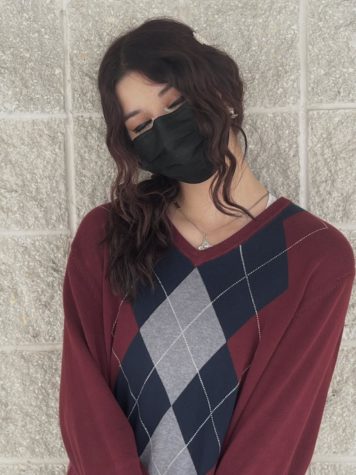The real cost of fast fashion
Are these affordable and stylish clothes too good to be true?
The never-ending cycle that fast fashion corporations rely on is putting us on a fast-track to environmental destruction.
When Kylie Jenner posts a picture on Instagram sporting a lacey lavender one-piece, expect to see a similar outfit being worn by every TikTok personality a week later. In recent years, the fashion industry has heavily relied on the quick and cheap production of items that are meant to be worn once or twice and then quickly forgotten: this is known as “fast fashion”. This phenomenon, although affordable and seemingly harmless, has been causing some major issues for our environment.
Fast fashion seems like a great idea in theory; the clothes are cheap, popular, and look great. The issue arises with how poor the quality of the items are. Fast fashion is created in the cheapest way possible for the manufacturer and therefore, is not made to last, usually falling apart after only a couple of wears.
According to What is fast fashion and why is it a problem, the average item of clothing is only worn 14 times. You’re better off buying a sturdy, well-made, timeless sweater than a stringy cheap top that will go out of fashion in a couple weeks.The frequent tossing of garments isn’t the only reason fast fashion is a problem; the materials used are terrible for our planet. Since these clothes are made as cheap as possible, they tend to be made of very harmful fabrics and materials.
According to The global environmental injustice of fast fashion, “90% of clothing sold in the United States [are] made with cotton or polyester.” These are produced with pesticides and oil, both of which cause immense damage to our resources and ecosystem. The dyes used for the fabrics end up as untreated water waste and are run off into local water systems, injuring the animals that rely on those bodies of water for hydration.

Not only that, but the synthetic fibers used by fast fashion companies are often made out of petroleum, which could take up to a thousand years to biodegrade according to Fast fashion quick to cause environmental havoc. Retailers that employ this business model have contributed to the fashion industry becoming the second-biggest global polluter, only behind oil. Fast fashion companies are more concerned about their profit than the environment, which is why supporting companies like Shein and Romwe can be detrimental.
Junior, Jennifer Sleem makes it a point when shopping for clothing to never purchase from fast-fashion retailers and instead, chooses more sustainable companies.
“My advice towards helping this fast fashion epidemic is to not just buy clothes because they’re trendy, but to lean towards staples and timeless pieces,” Sleem said. “This way you won’t have a pile of clothes in your room that you’ll never wear.”
When asked about the sustainable yet affordable shops she purchases her items from, Sleem had some great shops to share. “Some of my favorite store recommendations would definitely be Cider, Motel Rocks, and Minga London.”

Another junior at the Ranch, Elijah Conley loves to find stylish-yet-practical clothing, crafting the perfect outfit for each and every occasion.
When asked about his recommendations for sustainable shopping, Conley mentioned purchasing second-hand items.
“I would highly suggest thrifting clothes,” Conley explained. “Online shops like Etsy or Depop are self-owned businesses that sell either used clothing or clothes they manufacture themselves.”
When questioned on how he believes we could make a change, Conley suggested we “protest, stop buying, and keep talking about it. If people fight and make a stand, they will change.”
It’s clear that there are alternatives to the unethical consumption that fast fashion companies rely on, so why aren’t people tuning to those retailers and leaving shops like Shein in the past? Well it all comes down to cost. With prices rising due to inflation but the minimum wage staying low, it’s hard for people to afford new clothes. Whether new items are needed in their closets because their current ones don’t fit or because they’re simply out of style, consumers should be able to afford new outfits that make them feel good.
Many of these companies target young people who want to fit in with their prices and styles, but wreak havoc on the environment. There needs to be more affordable companies with sustainable methods of clothing creations out there.
According to The global environmental injustice of fast fashion, 80 billion pieces of clothing are purchased each year, over 400% more than two decades ago. We as a society need to end the fast fashion business model before the destructive endless cycle of consumption spins past the point of no return.
Your donation will support the student journalists of Wiregrass Ranch High School. Your contribution will allow us to purchase equipment and cover our annual website hosting costs.

Lauren is a senior at Wiregrass Ranch and this is her second year writing for The Stampede. She is a member of the CNA program, movie club, and is a vice...









